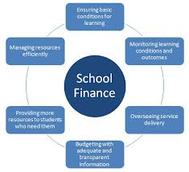
A major fiduciary responsibility of Boards of Governors is to ensure the on-going sustainability of the school. Some Boards engage in stop-gap measures such as "strategic downsizing" (a euphemism for declining enrolments) or "financial restructuring" (increasing debt load) but the real challenge is to put in place those measures that set the school up for success and then measure how well it is meeting its targets. High performing Boards (and their Heads) have well-established and actively monitored key performance indicators on such significant markers as: enrolment trends; inquiry/application/acceptance ratios; faculty and staff turnover; pupil/teacher ratios; and pupil/admin ratios. These numbers are often a window on the health of the school.
For example, if your number of inquiries is high (hits on your website, visitors to open houses, phone calls and tours, etc.) but your number of actual applicants is low, then you know that you have a competitiveness problem. Potential families are looking at you but choosing someone else. If you have a declining number of applicants and yet a consistent level of acceptances and admissions, then you have a standards problem. Stable numbers can often hide the fact that the school is accepting students whom would have been turned down in previous years. This might result in short-term financial stability but will definitely mean long-term decline in quality of programme, community reputation, and eventually, student numbers.
A sobering trend in independent schools in both Canada and the United States over the past 10 years has been an increase in the number of professional staff disproportionate to the growth in enrolments. The number of employees in independent schools has increased at double the growth rate of the student population while class sizes have remained constant. Who are all of these new employees? Part of it is an increase in service: counsellors, human resources personnel; communications/IT staff; etc. However, much of it is due to two other upward pressures. To begin with, as schools cast a wider net to find students, they begin to accept individuals who need a higher level of service (ESL, Learning Resource, educational assistants). The cost of these employees often more than cancels out the tuition revenues of the students whom they serve. Secondly, many independent schools are bucking the trend of the corporate sector by actually subdividing administrative responsibilities and adding new positions of responsibility rather than consolidating and streamlining. Boards often get too focused on the level of administrative salaries while ignoring radically rising administrative costs due to a creeping growth in the infrastructure.
So what can you do as a Board to ensure that your school is sustainable? In my next post I will discuss some key questions that Governors need to ask and predictive trends to consider when reviewing school performance.

 RSS Feed
RSS Feed